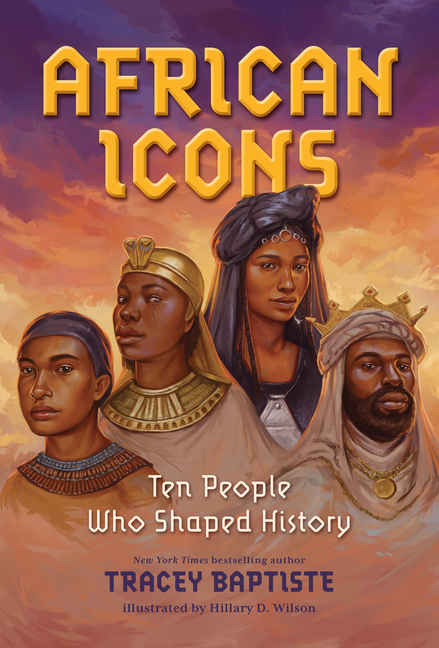Audiobook Excerpt narrated by Karne Chilton
African Icons: Ten People Who Shaped History |
Audiobook excerpt narrated by Karne Chilton.
Translate this transcript in the header View this transcript Dark mode on/off
Chilton, Karne: ... light on what was happening to the African land they lived on and how they helped to shape the lives of people on the continent and in the wider world. In so doing, I also hope to correct some inaccuracies about what was happening in Africa before enslavement and colonialism ravaged it.
The best place to start examining the early history of Africa is by looking at the land itself. We all have a distorted view of the African continent, thanks to disproportional maps. Africa is a lot bigger than you think. At 11,677,239 square miles, it takes up one-fifth of the total land area of Earth. The continent stretches for 5,000 miles from Cape Verde in the north to the Cape of Good Hope on the southern tip. It is nearly as wide across. The only continent larger than Africa is Asia. The most commonly used map, the Mercator projection, shows Africa 14. 5 times smaller than it actually is in proportion to other countries, while showing places like Europe, Russia, the United States, and Greenland much larger than they really are.
Graphic artist. Kai Krause created a map that compares the actual size of Africa to various countries. Not only is Africa the second largest continent on Earth, but the history of Africa is also the longest of anywhere on earth. Early humans appeared in Africa over two million years ago and evolved into Homo sapiens, or modern humans, about 200,000 years ago. About 70,000 years ago, Africans developed language, created art, tools, and hunting technology, and began moving out of the continent and populating the entire planet. The single language developed by Africans 50,000 to 70,000 years ago is the root of all 6,000 languages spoken around the world today. This original African language was complex, and it used a combination of sounds, including clicks. The very first languages to evolve from it were developed in eastern Africa in what is now Tanzania, Kenya, and Ethiopia. The enduring click languages of some African countries have more than 100 sounds, while some newer languages, like Hawaiian, have only 13. English uses 45 sounds.
Today, there are between 400 and 1,000 African languages, each reflecting the unique culture of its people. 6,000 years ago, as the landscape and climate changed, African people started moving across the continent, following better hunting opportunities and more fertile ground. Along the way, they developed new communities and complex forms of governments, some of which were matrilineal, some patrilineal. By 3000 BCE, gold had been discovered beneath African soil. Discovery of gold and other precious minerals changed agricultural communities into the world's very first kingdoms and empires. One of these was Kemit, which means "the black lands." It was so named by the people who lived there because of the rich mud of the Nile River. Later, foreigners began to call it Egypt. This kingdom formed in northeastern Africa, starting around 3100 BCE. To its south was the kingdom of Kush located in Nubia, as much of the land south of Egypt was called at the time. This kingdom consolidated its power starting around 1000 BCE. Three Kushite kingdoms ruled in Nubia for over 3,000 years. The last was the kingdom of Meroë, which was named for the capital city at the time of this reign. Though it's important to note that civilizations existed in northeastern Africa long before Egypt and Kush consolidated-
This audio excerpt is provided by Workman.



